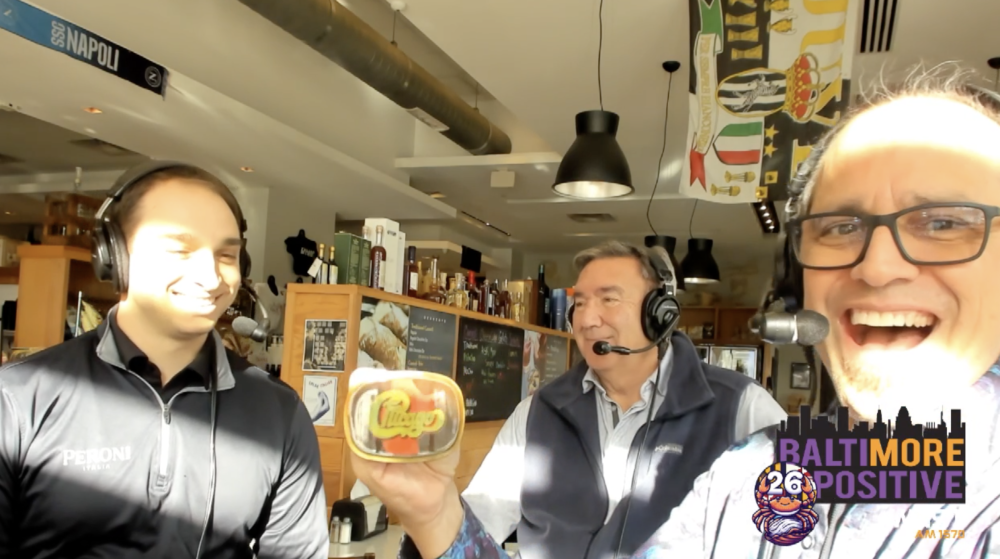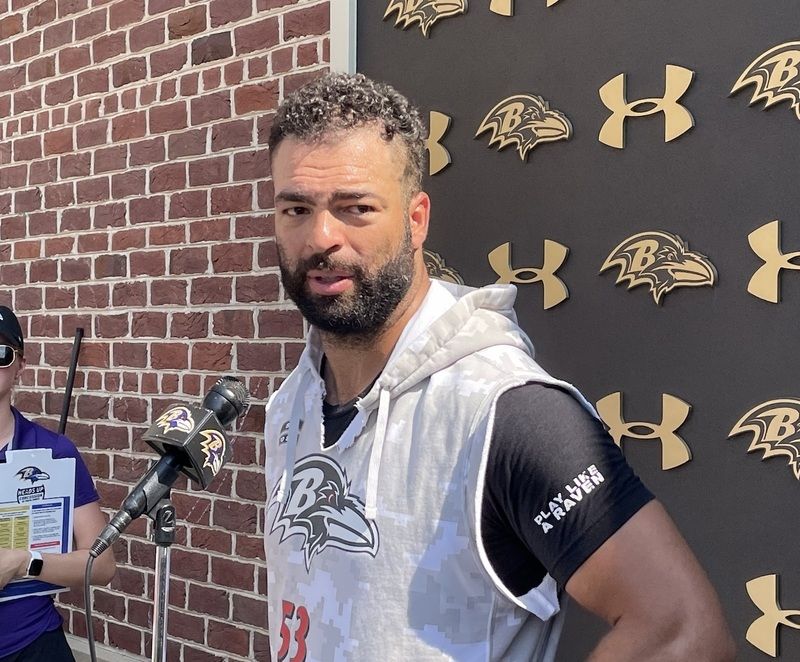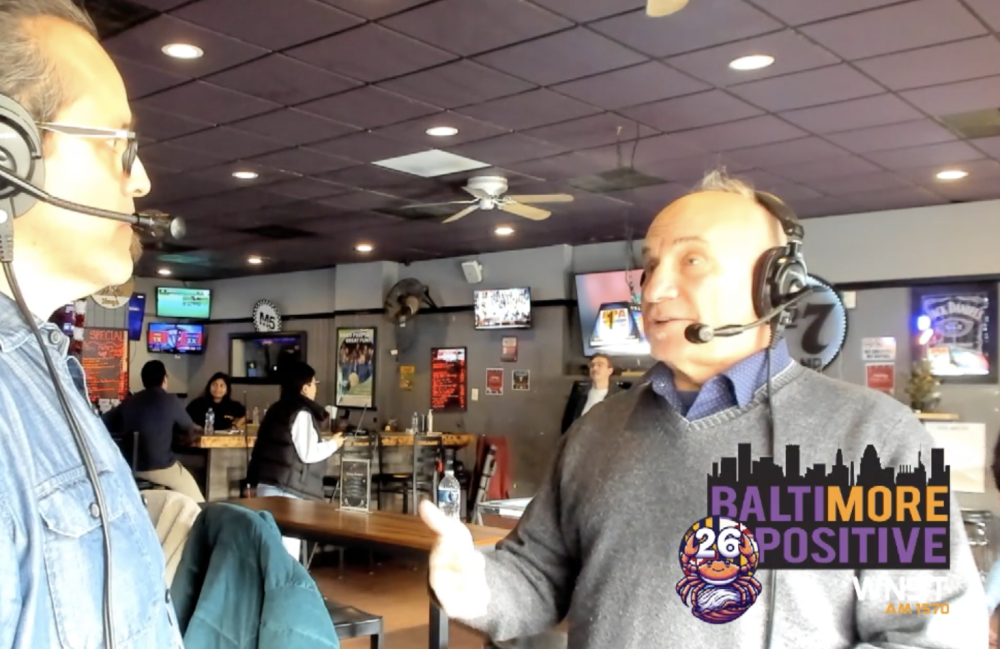It was one year ago Wednesday that the Orioles officially clinched their first American League East title since 1997.
But this Sept. 16 brought a much different feeling as many in an announced crowd of 22,642 at Camden Yards were chased away by an early 9-0 deficit and the Orioles wrapped up their penultimate homestand of 2015 with a 10-1 loss to Boston.
Under typical circumstances, winning three consecutive series and completing a 4-2 homestand are nice consolations in a blowout defeat, but the Orioles now embark on a 10-game road trip trailing the second wild card spot by 5 1/2 games, needing a historic finish to even give themselves a chance. Baltimore not only would need to catch Houston, but three other clubs — Minnesota, Los Angeles, and Cleveland — must be passed in the process, making any loss devastating at this point.
The many reasons for the Orioles’ shortcomings are obvious in mid-September as a terrible offseason led to a maddeningly inconsistent offense and the starting pitching that was so strong last season completely fell apart in 2015. But even with the well-documented free-agent departures, the offensive struggles, and the poor starter ERA, the Orioles can still point to a stretch of 12 losses in 13 games that began in late August and lasted through Labor Day — their worst baseball over that period of time in four years — and wonder what might have been had they avoided such a dramatic slide.
Even going 6-7 over those 13 games — hardly an impressive feat — would have left the Orioles only 1/2 game behind Houston for the second wild card as they began a road trip against Tampa Bay, Washington, and Boston.
Of course, you can pick out any stretch of prosperity or futility over 162 games for these types of arguments as someone else could say the Orioles would be locked into last place had they not won 18 of 23 games in June. Ultimately, they’re right where they deserve to be after playing such inconsistent baseball over 5 1/2 months, but that 1-12 stretch that began with a stunning four-game sweep at home against the Twins will likely eat at Buck Showalter and his players throughout the winter.
Pondering next year’s rotation
With a 4.61 starter ERA ranking 14th out of 15 AL clubs and their most consistent starter Wei-Yin Chen set to become a free agent, the Orioles will be faced with the unenviable task of revamping a rotation that became their biggest weakness after being a strength in 2014.
Realistically, which pitchers make up your starting five next season?
Assuming super agent Scott Boras will command No. 2 starter money and a long-term contract for the 30-year-old Chen, the Orioles are unlikely to sign him and he may not bring the greatest return on a big-money contract anyway. The Taiwanese lefty remains on pace to allow a career-high 31 home runs and has never pitched 200 innings in a season, but he will still be difficult to replace.
Chris Tillman is in the midst of a poor season skewed dramatically by his nightmarish struggles against Toronto (15.50 ERA in five starts), but his track record over the previous three seasons all but guarantees him a spot in the 2016 rotation. That said, extension talks should be tabled for now.
Kevin Gausman hasn’t taken the step forward you’d like to have seen in 2015, but much of that can be attributed to the organization’s poor decision to put him in the bullpen to begin the year. Whether he ever becomes a top-of-the-rotation guy remains to be seen, but he’s shown enough to be one of the five.
Ubaldo Jimenez? You’d love to dump that contract, but there are 26.5 million reasons over the next two years to think a trade is unlikely to happen.
Miguel Gonzalez was in the midst of the worst two-month stretch of his career before going to the disabled list with shoulder tendinitis earlier this month, but he was too good for three years just to bury him. Maybe he shouldn’t be promised a rotation spot, but he’ll enter the spring with every opportunity to earn one.
Dylan Bundy will be out of minor-league options, but his lack of experience still makes him a long shot to fill anything but a long relief role to begin 2016. The former first-round pick needs to prove he can stay healthy before anything else is even discussed.
Sure, young pitchers such as Tyler Wilson and Mike Wright will garner looks — the latter seems destined for the bullpen with his latest struggles — but it’s clear executive vice president of baseball operations Dan Duquette should be looking to add at least one impact starting pitcher — a second would really help — to augment the rotation. Beyond that, you can be cautiously optimistic that the track records of the incumbents will lead to at least a couple bounce-back performances in 2016.
Below Par-ra
Remember the angst over the Orioles needing to re-sign outfielder Gerardo Parra this offseason when he was acquired from the Milwaukee Brewers for minor-league pitcher Zach Davies at the trade deadline?
The 28-year-old was in the midst of the best season of his career with a .328 average and an .886 on-base plus slugging percentage at the time of the trade, but he’s hit just .226 with a .619 OPS with Baltimore and has been worth -0.6 wins above replacement, according to Baseball Reference. Instead of providing the spark the Orioles needed for the final two months, Parra has been swallowed up by the Orioles’ 2015 corner-outfield wasteland.
At the time of the trade, the Orioles were essentially hoping to cash in on another club’s version of a 2014 Steve Pearce for the final two months, but Parra has been worse than the player he was over the first six years of his career when he sported a .720 OPS. His career .595 OPS against left-handed pitching makes him an obvious platoon player, which is how Showalter has used him over the last couple weeks.
Even if the club feels inclined to bring him back — to be fair, he’s better than what he’s shown so far with the Orioles — Parra should hardly be viewed as a priority and doesn’t deserve big-time money to stay as he’s been no better for the Orioles than the likes of Alejandro De Aza and Travis Snider were this season.
Managing Hardy
Watching J.J. Hardy post Belanger-like numbers for Ripken-like money in 2015 has been painful, but a portion of the blame probably needs to go to Showalter.
It’s no secret that Hardy has dealt with several physical ailments that have led to his OPS free-falling from .738 in 2013 to .682 last season to a career-worst .552 in 2015, but a simple look at his game log shows inadequate consideration for his long-term health. Not counting time he’s actually spent on the DL or when he’s missed a few games with a specific injury, Hardy has received very few games off over long stretches of time. For example, the veteran shortstop started every game the Orioles played from June 5 through Aug. 11, only enjoying rest provided by the schedule or the weather gods.
In order to salvage the final two seasons of a three-year, $40 million contract signed last October, not only does Hardy need to find a way to get healthy in the offseason and stay that way, but the Orioles can no longer treat him like a player who’s going to play 155-plus games a season. Periodic days off and resting him for day games after night contests like a catcher should become the norm for the 33-year-old dealing with back and shoulder problems. Sliding over Manny Machado or playing Ryan Flaherty at shortstop more often is worth it if it means Hardy can contribute more at the plate.
Hardy’s defense remains good, but his offense has been a substantial liability this season. No one should expect a return to his level of production from 2011-2013, but the Orioles need Hardy to at least offer what he did at the plate in 2014 to prevent his contract from being a total disaster over the next two years. More rest over the course of the season would appear to give him a better chance of doing that.


























